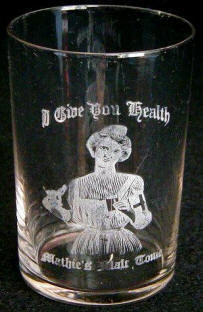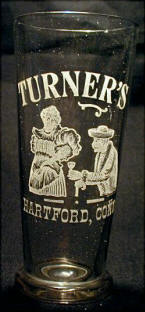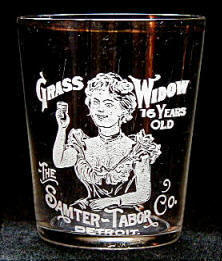|
Vol. 5, No. 5, Wednesday February 25, 2009
|
|||||||||||||||||
| by dick bales | |||||||||||||||||
So it seems that one might argue that until 1920, women were pretty much second-class citizens, at least in terms of voting in national elections. But let’s take this concept even further—how were women depicted on shot glasses prior to 1920—were they second-class citizens in this respect, too?
But on the other hand, even the half-naked woman does not have to have a “babe” connotation. Consider, for example, this painting by Eugene Delacroix (1798-1863) entitled Liberty Leading the People. One critic wrote that “to be led into a cloudless future by a beautiful half-naked woman is a dream that never fails of its effect.” Perhaps Lazarus and Adolph Scharff, the “proprietors” of Spring Hill Perfection Whiskey, had this painting in mind when they designed this shot glass:
Although women were not considered the equals of men when it came to voting in pre-pro America, at least some distillers treated them as equals on their shot glasses. Consider these three glasses; it seems clear that these two female equestrians are at least the equal of the male horse rider.
Sometimes women were portrayed with elegance and style:
Finally, we have the “wonder women” of shot glasses. These glasses depict women who could easily kick this “bachelor’s” butt:
What can we conclude from this “sociological study?” Perhaps one could
argue that at least some designers of pre-pro shot glasses were the
earliest proponents of women’s rights. Granted, some glasses depict
women as “old maids” or sex objects. But more than a few glasses show
woman as being either the equal of men or possibly even superior to men.
Viva la Difference! |
|||||||||||||||||
|
If you would like to comment on "The Common Stuff", please post it but you can also contact Dick Bales directly at BalesD@CTT.com |
|||||||||||||||||
|
Copyright © 2009 pre-pro.com. All rights reserved. |
|||||||||||||||||




















